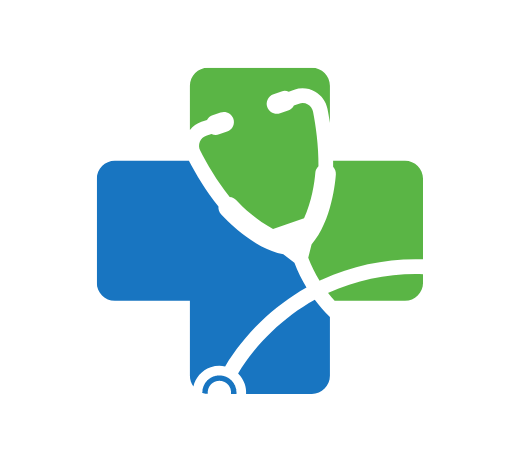
We’ve all experienced it: a long wait at a public clinic, a needed piece of medical equipment that’s out of stock, or a doctor juggling too many patients at once, creating a feeling of inefficiency and frustration. These common issues are a direct result of a core challenge in modern public health systems: managing limited resources effectively to meet the immense and growing needs of a population. This guide will explore the strategic and ethical principles that public health professionals must master to ensure their systems are not only sustainable, but also deliver equitable, high-quality care to every individual.
Understanding the Core Challenge
Public health systems operate in a complex environment where resources—financial, human, and material—are always finite. These systems must constantly navigate competing demands, from managing chronic diseases and responding to infectious outbreaks to providing preventative care and investing in long-term infrastructure. The challenge is amplified by factors like aging populations, the rise of non-communicable diseases, and the increasing costs of medical technology. Without a clear strategy, resources can be misallocated, leading to inefficiencies and, most importantly, inequities in care. For instance, a common issue in many countries, including Turkey, is the concentration of specialized medical professionals in large urban centers like Istanbul, leaving rural areas with a significant shortage of experts. This imbalance highlights the critical need for a more strategic, data-driven approach to resource management.
The Role of Strategic Planning
Effective resource management begins with a robust strategic plan. This is not just about creating a budget; it’s about aligning every available resource with the system’s overarching goals. Health managers must conduct a thorough analysis of their community’s needs, identifying key health challenges and vulnerable populations. This allows them to prioritize where to allocate funds, personnel, and equipment for the greatest impact. For example, a public health system facing a high prevalence of diabetes might strategically invest more resources in community-based screening programs and patient education, rather than solely on high-cost treatments. This forward-thinking approach focuses on prevention and long-term health outcomes, a far more sustainable model. By taking a proactive rather than a reactive stance, we can stretch limited resources much further.
Prioritizing with Ethical Frameworks
Deciding which services to fund or which populations to prioritize is often a delicate and difficult process. This is where ethical frameworks become essential. The principle of equity, for instance, dictates that resources should be distributed to reduce health disparities and ensure equal access to care for all, regardless of socioeconomic status or geographic location. This might mean allocating more funding to a low-income neighborhood with higher rates of a particular disease. Another key principle is utility, which focuses on achieving the greatest good for the greatest number of people. Decisions must be based on clinical need and the likely effectiveness of a treatment, not on discriminatory factors. It is a balancing act between providing individual patient care and meeting the needs of the wider population. In Dubai’s multi-national context, this is particularly relevant, where decisions must serve a diverse resident population from all corners of the globe.
Leveraging Technology for Optimization
In the modern era, technology is an indispensable tool for optimizing public health resources. Advanced analytics and information systems allow managers to track and monitor resources in real time. Predictive analytics, for example, can forecast patient volumes and disease outbreaks, helping hospitals to proactively adjust staffing levels and allocate supplies before a crisis hits. This reduces the chance of understaffing or resource shortages. Furthermore, implementing smart healthcare systems and electronic health records streamlines processes, minimizes paperwork, and reduces human error. This data-driven approach not only improves efficiency but also enhances patient care and safety. The ability to monitor resource utilization with such precision is a game-changer, allowing for rapid adjustments and a more resilient system. We can say with certainty that technology will continue to be a cornerstone of modern healthcare.
Financial Stewardship and Budgeting
Financial management is at the heart of resource allocation. Public health managers are responsible for ensuring that funds are used for their intended purposes and are accounted for clearly and properly. This involves meticulous budgeting, cost-benefit analysis, and regular audits to identify areas of waste or inefficiency. Every dollar saved on administrative overhead can be redirected toward patient care or public health initiatives. For example, negotiating bulk purchasing agreements for medical supplies or implementing energy-efficient technologies can lead to significant cost savings. While we will not mention specific costs, it is a reality that the financial pressures on public health systems are immense, and a keen eye for fiscal responsibility is an absolute must. Good stewardship shows that the system is taking its responsibilities seriously.
Human Resources: The Most Vital Asset
The most critical resource in any public health system is its people. Managing a diverse workforce of doctors, nurses, administrators, and support staff is a monumental task. This requires strategic workforce planning, which involves assessing current staff skills and identifying future needs. A key challenge is addressing issues like burnout and staff turnover, which can severely impact the quality of care. Promoting a supportive work environment, investing in professional development, and ensuring equitable compensation are vital for retaining talent. Without a dedicated and well-managed team, no amount of financial or technological investment can ensure a system’s success. It is a well-known fact that a motivated and well-supported workforce can achieve far more with less. The editor at www.turkishdoctor.ae would agree that this is a universal truth in healthcare.
Collaboration and Inter-Agency Coordination
Public health issues often extend beyond the confines of a single hospital or clinic. Effective resource management requires collaboration across different agencies, both within and outside the healthcare sector. For example, managing a public health crisis like a pandemic requires coordination with government agencies, schools, and community organizations. Sharing data, expertise, and resources prevents duplication of efforts and ensures a more cohesive and efficient response. In an interconnected city like Dubai, where multiple jurisdictions and private healthcare providers exist, coordination is particularly vital. A siloed approach is a recipe for disaster; a collaborative approach is a pathway to success.
The Challenge of Infrastructure
Resource management also involves the physical infrastructure of the health system. This includes hospitals, clinics, and all the equipment within them. Managers must make difficult decisions about when to invest in new facilities versus upgrading existing ones. They also have to decide on the procurement of new, expensive medical devices, weighing their cost against the potential benefits for the population. A strategic manager would consider the long-term impact of these investments, thinking about how a new hospital wing or a state-of-the-art MRI machine will serve the community for decades to come. This kind of planning requires both foresight and a firm grasp of the community’s evolving health needs.
Measuring Performance and Impact
A well-managed system is a system that can measure its own performance. Public health organizations must use key performance indicators to assess the effectiveness of their resource allocation strategies. This includes tracking outcomes such as patient wait times, treatment success rates, and patient satisfaction. Regular reviews and audits help to identify areas of inefficiency and allow for evidence-based adjustments. By continuously monitoring and evaluating their operations, health managers can make sure that resources are being used in the most effective and efficient way possible. This feedback loop is essential for continuous improvement. It shows a commitment to getting better every single day.
A Look to the Future of Resource Management
As public health systems continue to evolve, so will the methods of resource management. We are seeing a shift towards more personalized and population-based approaches, where resources are tailored to the specific needs of different communities. The use of big data, artificial intelligence, and telemedicine will become even more prevalent, offering new opportunities for optimization and efficiency. The focus will be on creating systems that are not only resilient but also responsive to the unique and dynamic needs of the people they serve. It is an exciting time to be involved in public health, where the right strategies can lead to better outcomes for millions of people around the world.

 then "Add to Home Screen"
then "Add to Home Screen"